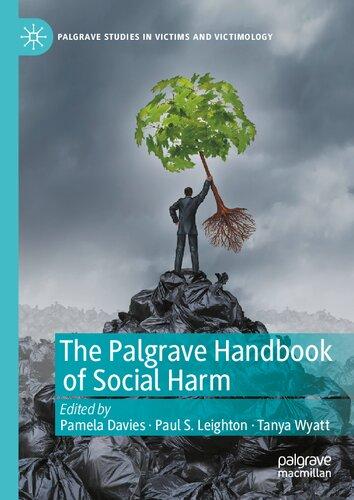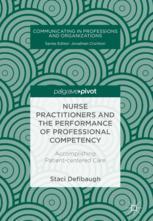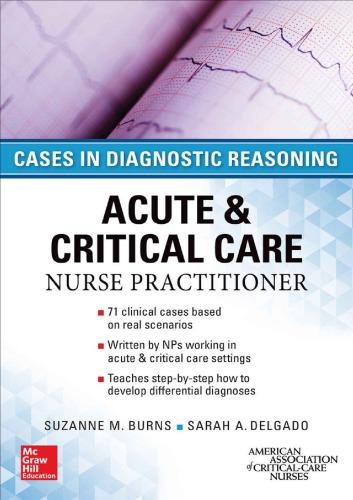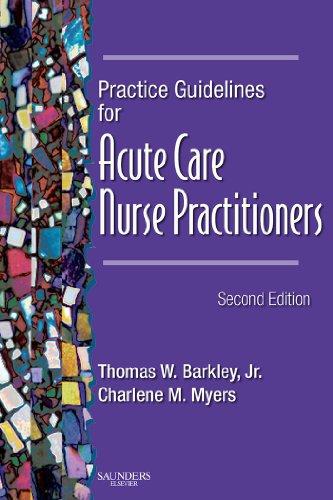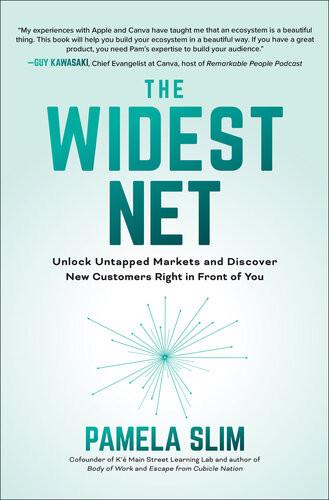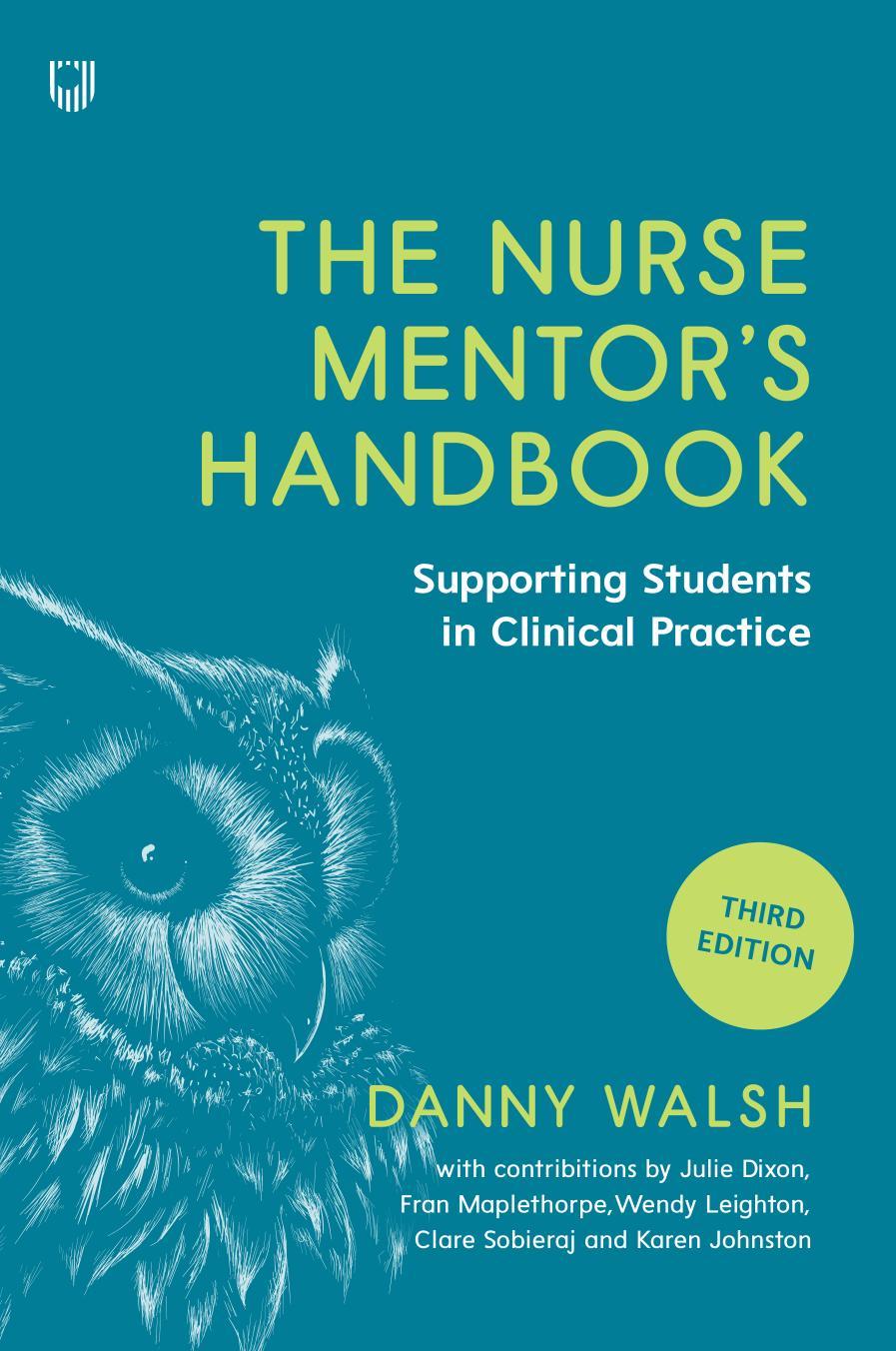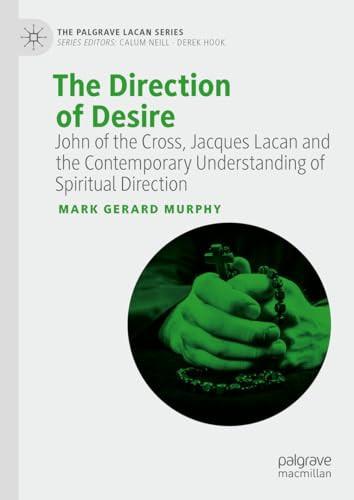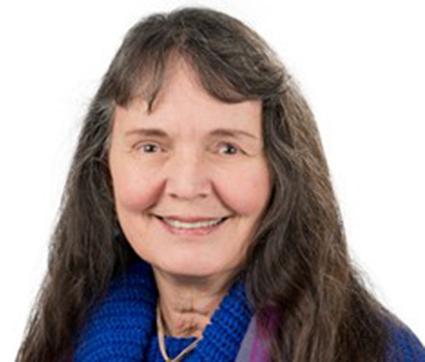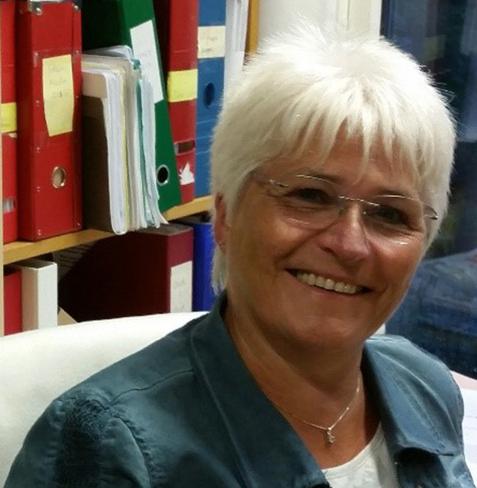Preface
The Nurse’s Handbook of Spiritual Care was developed for nursing students and nurses in all aspects of healthcare. The authors, an American nurse and a Norwegian nurse with 15 years of collaborative research, wrote a parallel book in Norwegian published in 2019 (Å ta vare på heile mennesket: Handbok i åndeleg omsorg) for the Scandinavian nursing audience. We hope this version, which presents a variety of European and American perspectives, will reach English-speaking nurses around the world. With this handbook, we want to help nurses develop competence as part of patient-centered, whole person care, and we want to show that spiritual care is a self-evident part of all nursing care. We would like to equip the reader with a professional perspective on this aspect of nursing care.
The authors build on extensive research in spiritual care by us as well as other nurse scholars interested in spirituality, and we present a learning spiral for improving knowledge and skills, which can lead to increased facility with spiritual care. By following the steps described, you can learn to “tune in” to patients and recognize and follow up on spiritual suffering and existential pain. You can also learn to use the inner resources that patients have for healing, and to reflect on/over the experience of what you have done to facilitate patient health and well-being. The purpose of this handbook is to motivate students and nurses and to improve their practice of spiritual and existential care as part of whole person healthcare.
All nursing education should teach spiritual care and ensure that students have fundamental knowledge, skills, and clinical practice within the spiritual domain so that they see this as an integral part of whole person or holistic nursing care. At the same time,
supervisors in healthcare settings should ensure that the working environment is a welcoming one so that students and nurses can feel free to further develop their competence in this domain. Developing competencies for nurses can enable them to include data collection, situational assessment, follow-up, and reporting of patients’ spiritual and/or existential needs and resources in their routine patient care.
Many colleagues have contributed to this project with ideas, tools, and stories. All of the examples used in this handbook are based on real events in the USA, Norway, and globally as reported by spiritual care researchers. Some come from our own practice and research, or they are stories from other scholarly research retold fully or in part, and edited to ensure the anonymity of patients, nurses, and students. Where we have used published narratives, we provide references. Together, these present a variety of resources that the readers can use to be inspired and challenged, and for reflection and learning. We use “patient” in this handbook knowing that some of the readers are nurses who utilize “clients” or “users.”
The handbook covers the fundamentals of spiritual care so that reader awareness can be raised and nurses can be equipped and encouraged to open up and learn what the patients want to share with them. It is also important to emphasize that this is a field where no one is ever fully trained; there is always more to learn. All patients and situations you encounter are unique, and spiritual relationships can be expressed and met in a variety of ways. We will emphasize from the beginning the importance of life-long learning in this field. The handbook includes an introduction to the spiritual domain, followed by three chapters on the steps of preparing, connecting, and reflecting on the spiritual. Finally, we conclude with a chapter on self-care nursing with strategies to empower yourself and others in healthy ways. It also provides further discussions and resources to increase life-long learning of spiritual care.
The learning spiral, a teaching-learning theory developed by the authors in our early spiritual care research in Norway, is what guides the three chapters that follow. These chapters each deal with one of the three phases of the learning spiral. Chapters 2 through 4 are structured in the same way with an introduction to topics illustrated by stories that are followed by questions for reflection and suggestions for competencies that nurses can use.
Chapter 1 – Basics of Spirituality and Spiritual Care is a discussion of how spirituality and spiritual care are understood by the nursing profession globally. We begin with the premise that whole person care includes the physical, psychosocial, and spiritual. Spirituality is about existential questions; it is about meaning and purpose and hope as well as connectedness to self, others, and the transcendent. It addresses what a view of life is from different perspectives. It also includes religion and faith traditions with a variety of rituals and practices. We know that quality care is an important part of person-centered, whole person nursing care, and the ethical standards that guide the curriculum for nursing education, theory, practice, and research as well as the reporting and documentation of care represent a view of nursing care that includes spiritual care as an integral part of the nurse’s area of responsibility.
Chapter 2 – Preparing for Spiritual Care is the first phase of the process. Initially, we go into different aspects of knowing yourself on a deeper level. We encourage the reader to consider why this is important in the exercise of spiritual care, and we invite the reader into various activities that can help in the process of becoming better acquainted with your own views, prejudices, attitudes, and stereotypes, particularly related to the spiritual domain. We also go through some assessment guides that can help nurses identify what patients need that is of a spiritual nature. Preparation is done through reading, reflecting, journaling, and dialoguing on the topic. At the end of the chapter, we look more closely at general and special competencies for spiritual care.
Chapter 3 – Connecting: Recognizing and Following up on the Spiritual discusses how we can identify, assess, and follow up on spiritual/existential and life-related situations and conditions with patients. We also address how to identify and use the patient’s resources in the same way that we consider and follow up the physiological and psychosocial needs of patients for whom we are responsible. When there is something of a spiritual nature that is at stake in the patient’s life, we illustrate the iterative process until he or she gets help. Scenarios and questions for reflection are integrated throughout the chapter. We discuss how to report spiritual
needs and resources, and illustrate this with a story. The chapter concludes with a review of various factors that affect the spiritual care process.
Chapter 4 – Reflecting on Experiences in Spiritual Care is where we look more closely at how important reflection is for events and experiences to be transformed into growth and wisdom. We also look at how we can work with reflection both individually and in groups to deepen our understanding of what is spiritual in nature, what is considered as best practice in various situations, and how we can improve our patient-centered, whole person care. We go into what competencies students will develop during their course of study and how nurses can further develop competence in spiritual care as they encounter the deep inner spirit needs of patients.
Chapter 5 –Life-long Learning and More is where we discuss how nurses can grow and mature into healthy and robust professionals who thrive in any healthcare setting. We promote self-care of the nurse by focusing on how nurses can pay attention to our own needs and care for ourselves, thus avoiding burnout. Assertiveness training and development of a variety of coping strategies is discussed. We face head-on the challenge of bullying in the workplace and how caring for the spirit can counteract such negative practices among nurses. In this way, we will avoid the promotion of a hostile environment, and instead provide a warm and welcoming environment for patients and their families as well as for our fellow healthcare professionals. We conclude with more resources to promote increased capacity in and facilitation of spiritual care so that nurses can thrive in our challenging healthcare environment.
Basics of Spirituality and Spiritual Care
WHAT IS SPIRITUAL CARE?
The authors asked that question during our 2008 study in Norway of how teachers understand and teach about care that is spiritual in nature. One teacher said this:
I was working with students in the clinical setting at a nursing home where many patients had dementia. During our pre-conference time a student asked how the nurses could give spiritual care when the patients could not answer questions or talk about their beliefs and values. The nurse thought a moment and said, “I make waffles.” The students looked at each other in puzzlement. “Waffles?” one said. “Yes, I make waffles, and you know, the patients are so happy to smell them and eat them, and they just love it! I don’t know what they are thinking, but they are happy for a long time afterwards. So, yes, I make waffles.”
The Nurse’s Handbook of Spiritual Care, First Edition. Pamela Cone and Tove Giske. © 2022 John Wiley & Sons Ltd. Published 2022 by John Wiley & Sons Ltd.
To contextualize this story, many Norwegians have a long tradition of having family time on Saturdays, with families gathering in the kitchen and making waffles with lots of delicious toppings. These are precious times for the family (families have various ways of preparing waffles that are passed down from mother to daughter), and this cultural practice is something that every Norwegian understands is important to the family. So, what made this waffle-making activity spiritual in nature? It certainly is not related to religion or faith, but rather, it is about something that touches what is deeply important to someone, what gives a person a sense of love and belonging, regardless of any ability to think or actually remember events.
In this chapter, we first present how spirituality and spiritual care are understood by the nursing profession and in relation to health globally. We discuss existential questions that often arise in situations of uncertainty or serious illness before we raise the issue of religion or faith tradition and what a view of life or life-view is. That spiritual care is part of the nurse’s area of responsibility is evident in the ethical guidelines for nurses (ANA 2015; ICN, 2021) and in nursing theories like the Artinian Intersystem Model (Artinian et al. 2011; McEwen and Wills 2017) and Neuman’s Systems Model (Alligood 2018; Petiprin 2016) that emphasize the central role of spirituality in every person.
The Artinian Intersystems Model (AIM) has a view of person that is threefold (biological, psychosocial, and spiritual) with spirituality at the core of the person (Artinian 1991). Nursing students at Azusa Pacific University (APU), where Artinian taught while developing her model, use this focus of person in their nursing care plans, requiring the nurse to complete assessments of all three aspects of the person. The focus of the AIM, with its traffic light framework for identifying knowledge (comprehensibility), values/beliefs/attitudes (meaningfulness), and behaviors/ actions (manageability), is to assess the patient and the nurse in these areas and to develop a mutually negotiated plan of care (Artinian et al. 2011; McEwen and Wills 2017). By requiring regular spiritual assessment alongside the other domains, the nursing program heightens student awareness and understanding of the
spiritual area. Spirituality is a thread that runs through the APU nursing curriculum from bachelors through doctoral studies.
The systems focus of Betty Neuman’s model emphasizes the “wholistic” approach to nursing (Neuman 1996) and the openness required to appropriately gather information. The Neuman Systems Model (NSM) also identifies the spiritual as an integral part of the whole person (physiological, psychological, sociocultural, developmental, and spiritual), with all aspects of the core structure focused on basic survival factors that allow the human system to function (McEwen and Wills 2017). For Neuman, the spiritual variable includes beliefs and influences that provide lines of defense around the core of the person to help their spirit survive and thrive. The interrelationship between the five aspects of the person is crucial to appropriate functioning of the whole person. Neuman is also known for promoting three aspects of prevention (primary, secondary, and tertiary) that help the system work at peak efficiency (Alligood 2018). The NSM supports the importance of gathering information on spiritual resources of patients as well as identifying the needs, both met and unmet, in the spiritual realm that can help guide spiritual care.
The North American Nursing Diagnosis Association (NANDA 2016) addresses four elements of care that are spiritual in nature:
1. meaning and purpose, especially in light of health challenges
2. love and belonging (or connectedness and relationships to self, others, and the environment)
3. hope versus hopelessness or despair and
4. religious beliefs, values, and practices and/or faith traditions and a sense of the transcendent (Herdman and Kamitsuru 2017).
A person experiences spiritual well-being when those needs are met; but if any of those needs are not met, there can be spiritual distress (Herdman and Kamitsuru 2017; Taylor et al. 2019b). This is similar to the European understanding of nursing care that
includes three elements of spirituality: meaning, connections, and transcendence (Kristofferson et al. 2016). Other theorists organize these components in different ways (McSherry and Ross 2010). Regardless of the definition of spirituality, spiritual care is an integral part of nursing care and an area of ethical responsibility of the nurse (ANA 2010).
Spirit – Breath of Life
In nursing literature, “the spirit” is understood in a broad sense as being the element that holds the person together, and though we have no common global definition of what it is all about, there is a general understanding that it is central to the person (Artinian et al. 2011; Stoll 1979; Taylor et al. 2019b). The spirit encompasses the entire human being and is not material or tangible. It is the intangible “breath of life” of every being. The spirit of a person touches on the inner being and may be expressed alone or when interacting with others. Spirituality includes the big questions in life, as well as peace of mind or inner peace, and is what provides the life spark of a human being. It is important for health and for the experience of wholeness in which body, soul, and spirit form the entire being (Rykkje 2016; Stoll 1979).
The authors of this handbook exemplify cultural diversity to some extent since we are from very different backgrounds. The first author is American (though born of missionary parents and raised in Haiti), living in the Los Angeles, California area where many cultures and people groups intersect, so a variety of views on the spiritual are regularly encountered by nurses. In contrast, the word for “spiritual” in the Norwegian context, where our second author lives, has a religious overtone that causes people to think immediately of faith, religion, and Christianity, which she sees as too narrow for a multicultural global society. In areas where spirituality is entwined with religious or faith-based meanings, some nurses would rather use the word “existential,” which has a broad non-religious meaning. Because the nature of spirituality is interpreted differently across countries and cultures around the world, it can be difficult to grasp and hard to explain.
In light of this lack of consensus, we present various views, descriptions, and definitions of the spiritual as understood by nurses in a variety of settings. At times, we use the concepts spiritual and existential together (spiritual/existential) to encourage a broad understanding of spirituality.
The English nursing association, the Royal College of Nursing (RCN), defines spirituality as being about hope and strength, trust, goals and thinking, empathy, beliefs and values, love and relationships, morality, creativity, and being able to express yourself and communicate with others (RCN 2011). These are many keywords that go back to what the spiritual is across nursing literature. The RNC created a nurse pocket guide as a free download to help address spiritual issues as part of nursing care (www.rcn.org.uk).
Another way of discussing spirituality is in the European Association of Palliative Care (EAPC) literature, where scholars provide a consensus definition for this concept. “Spirituality is the dynamic dimension of human life that relates to the way people (individual and community) experience, express and/or seek meaning, purpose and transcendence, and the way they connect to the moment, to self, to others, to nature, to the significant and/ or to the sacred” (Nolan et al. 2011, p. 88). Within their definition, spirituality encompasses three primary dimensions:
1. existential questions (concerning, for example, identity, meaning, suffering and death, guilt and shame, reconciliation and forgiveness, freedom and responsibility, hope and despair, and love and joy)
2. value-based considerations and attitudes (that is, the things most important to each person, such as relations to oneself, family, friends, work, things, nature, art and culture, ethics and morals, and life itself)
3. religious considerations and foundations (faith, beliefs and practices, rituals, one’s relationship with God or the ultimate) (Nolan et al. 2011, p. 88).
Additionally, an Irish research team analyzed 47 theoretical and empirical articles from various areas to clarify the content of
the concept of spirituality (Weathers et al. 2016). The analysis shows that the spirit has many dimensions, the individual person has a unique history, and the spirit is expressed in different ways among different people. The relationship aspect encompasses the self and attachment to others, the environment and/or nature, and/or a higher power or something that is beyond self, together with a sense of meaning in life. Another aspect of the spirit is the experience of transcendence beyond yourself, everyday life, and the world in which you live. Transcendence is the ability to transform or change perspective on a given situation or life in general so that the experience of the situation changes and moves beyond self. Weathers et al. (2016) found three defining attributes of spirituality: acknowledgement of a higher power or someone/ something beyond self; connections or attachment/relationship to self, others, and nature; and the need to find meaning and purpose in life. Transcendence, relationship, and meaning are thus found across nursing literature, and the importance of caring for patients spiritually as part of whole person, patient-centered care is in most foundational nursing textbooks (Kristofferson et al. 2016; Taylor et al. 2019b).
We summarize the spiritual domain with a paraphrased narrative from psychiatrist Victor Frankl, a holocaust survivor who wrote Man’s Search for Meaning (Frankl 1946/1959).
A widower came to Frankl for treatment. After his wife’s death, the man felt that life was no longer worth living. Over time, this man and the psychiatrist talked about many different things, and during one conversation, Frankl asked him, “What would it be like if you were the one who died and your wife the one who lived as a widow?” “Oh,” said the man, “that would not be good! If it were one of us who had to die first, it was good that I’m the one who lived, because I am better able to live alone than she would be.”
This extract from Frankl’s conversations with the widower highlights the importance of having meaning in relationships and finding what is meaningful for each of us. The man had felt that
his life no longer had meaning since he was alone. The question about what it would have been like if he had been the one who died, and thus, avoiding a life with such great sadness, made him suddenly look at his situation with new awareness. Thus the whole experience of the situation changed (transcendence), and he had a new sense of purpose for his grief (meaning), namely, that he had saved his wife from the experience of being widowed and living alone.
Reflection 1.1
• After reading the different ways of describing “the spirit,” what do you think about “the spirit” in your own life?
• How would you define or describe the spiritual domain?
• What element of the spiritual do you see most often when caring for others?
• Do you recognize spiritual expressions, cues, or themes when working with patients?
SPIRITUAL CARE
What then is spiritual care? Spiritual care can be summed up as caring for the whole person through patient-centered care and being completely present for the other, by listening for what is important in the patient’s life, and often by facilitating practical matters that are deeply important to the person (Carson 2011; Kuven and Bjørvatn 2015; Rykkje 2016; Taylor et al. 2019b). American nurse philosopher and theorist Jean Watson (1997) has presented many spiritual aspects of care in her 10 Caritas Factors (Watson 1999; Wei and Watson 2011) that are foundational to caring practice in nursing.
1) humanistic and altruistic values; 2) faith/hope; 3) sensitivity to self/others; 4) developing helping, trusting, caring relationships; 5) accepting/expressing positive/negative
feelings/emotions; 6) creative/individualized/problemsolving; 7) transpersonal teaching/learning; 8) supportive, protective, or corrective mental/physical/societal/spiritual environment; 9) human needs helping; and 10) phenomenological existential, or spiritual forces (Alligood 2018, pp. 95–96).
Of these factors, more than half explicitly address the spiritual (1–5, 8, and 10), while others (6, 7, and 9) have a more implicit connection to the inner person/spirit. These remind us that compassionate care comes from the inner spirit of the nurse.
Danish nurse researcher Vibecke Østergaard Steenfeldt puts it this way: “Spiritual care is to have the courage to go with the patient into the space of the suffering and be there with the patient” (Steenfeldt et al. 2018, p. 34). The purpose of spiritual care it is “to help the patient with life development” (p. 30). Spiritual care alleviates patient suffering and increases a sense of well-being and of feeling supported (Best et al. 2015). When life is difficult, the spiritual can be an important resource, which can help the patient achieve a sense of inner peace and strength (Giske and Cone 2015; Rykkje 2016; Taylor et al. 2019b; Weathers et al. 2016). Spiritual health promotion is part of whole person nursing care and includes relieving or alleviating pain and/or suffering, or simply treating the patient with dignity and respect. Jessie, a patient who was very anxious to go home the day after having a stroke, haltingly told the nurse this story:
I had a stroke on my right side, and the night nurse put the call button on that side even though my hand is weak. During the night, I had to use the toilet, but I couldn’t press the button. I tried calling out, but nobody came. I tried to hold my urine, but finally, I could not, so I wet the bed. I felt so humiliated! I lay there for a long time in a wet bed until morning when that nurse came to check on things near the end of her shift. She said to me “You all right, honey? Oh, you peed in the bed! Oh dear, I guess we’ll have to put a diaper on you!” I said “Sorry!” but she did not answer. She
came back with another nurse and proceeded to change the bed, just rolling me from side to side and talking over my head to the other nurse, and then putting a big diaper on me and settling me down again with the call light still by my weak right hand! She never called me by name, just “honey” and she never found out that I can hold my urine just fine as long as I get a bedpan when I need it!
The day shift nurse, who had listened patiently while Jessie struggled to communicate, apologized for the way her inner sense of dignity was destroyed and her spirit was hurt by the night nurses’ attitudes and actions. The nurse removed the diaper and made Jessie comfortable again, and then placed the call light beside her strong left hand.
Reflection 1.2
• What was spiritual about this nurse-patient encounter?
• What would have changed this encounter into a positive, uplifting experience?
• How did the day nurse provide spiritual care?
• Can you think of a time when practical care had/has a spiritual dimension to it?
The RCN in the UK also made a list of what kind of care is not spiritual. According to these guidelines, spiritual care is not simply about religious beliefs and practices; such needs can be referred to the appropriate spiritual leader. Nor is it right for students or nurses to force their personal values on a captive audience, threaten others with their own beliefs, or exploit situations to persuade patients to change their beliefs to match those of the nurse, all of which are completely unethical (Fowler 2020). Spiritual care is not just a responsibility for specialists or especially interested nurses, and it is not simply the responsibility of the hospital chaplain/priest or other religious leaders (ANA 2010; RCN 2011).
Spiritual care is about being interested in and paying attention to the patient’s deep inner concerns and/or existential questions (Cone 2020). By encouraging the patient to express himself or herself and listening in an open and non-judgmental way to the patient sharing his/her own beliefs and traditions, the nurse is providing supportive spiritual care. Moreover, spiritual care is about how one carries out practical and concrete nursing care, that is a combination of what we do (the science of nursing) and the way we do it (the art of nursing), both of which are very important (Cone 2020; Taylor et al. 2019a). Spiritual competencies include knowledge, skills, and attitudes as we provide care (Van Leeuwen and Cusveller 2004). It can be about how we wash and feed a patient, change dressings on wounds, or change the diaper on a patient who is incontinent. The way these things are performed can alleviate suffering, build good relationships, and strengthen hope in a patient, or it can increase suffering and lessen hope and life courage, which is the courage to be (Clark 2013).
With patients and their families in clinical practice, we seek to understand the patient’s situation in a whole person way rather than dividing things up to consider physical, mental, emotional, social, and spiritual elements separately; all of these are interwoven in a human being’s life (McSherry and Ross 2010). During the learning process, it may still be necessary to clarify that spiritual care has its own characteristics that you can consciously look for, read about, discuss within the nursing profession, and report on or document. However, as you grow in your understanding, whole person care will begin to weave these elements all back together (Cone 2020). In the work to develop quality of life goals for spirituality, religiousness, and personal beliefs, the World Health Organization conducted a large, 18-country international study in 2002 and developed eight characteristics that distinguish spiritual care from psychosocial care (WHO- QOL SRPB Group 2006). They found that quality of life that measures spirituality, religion, and personal faith is about:
1. what relationship one has to a spiritual being or power and how it helps one through difficult times and stress
2. the meaning of life, which is related to the experience of meaning, if one feels that one has a goal or purpose in life, and whether one feels that one has a reason to live
3. to what extent one experiences awe in relation to nature, music, art, or beauty and whether one experiences being grateful
4. wholeness and integration, which is about the experience of the relationship between mind, body, and soul and consistency between thoughts and feelings
5. spiritual strength, which relates to the extent to which the inner spirit helps one to bear it when life is difficult as well as helping one to be happy in life
6. inner peace/calm/harmony, which is about to what degree one has inner peace and feels an inner harmony with oneself
7. hope and optimism, seeking hope or being hopeful and optimistic in life and
8. to what extent faith contributes to well-being, strength, and joy in life (WHO - QOL SRPB Group 2006).
Spiritual care is not just about addressing spiritual needs; it also includes helping the patient access spiritual resources that bring joy and strength, thus helping them not only to survive but also to thrive (Cone 2020). The National Health Service (NHS) Education in Scotland, which has worked extensively with what kind of care is spiritual in nature and what space it should have in healthcare, describes spiritual care as care that:
. . .recognizes and responds to the need of man’s spirit. . . Spiritual care can include the need for self-worth, for expressing, for support, perhaps for ritual or prayer or sacrament, or just for a sensitive listener. Spiritual care begins with encouraging human contact in a compassionate relationship and moves in the direction needed.
(NHS 2009, p. 6)
The last part of the quote, moves in the direction needed, means that the patient is the one who decides what is important
12 Chapter 1 Basics of Spirituality and Spiritual Care
(Giske and Cone 2015). It is not the nurse controlling the process; the nurse should follow the patient on the path they or their family need. We must be willing to go where the patient is and at the pace the patient sets (Giske and Cone 2015; Minton et al. 2018). Journeying with (Cone and Giske 2013b) can mean following along with or being a fellow human being together on a learning journey or on a mutual journey through crisis and suffering (Cone and Giske 2013a, 2013b; Edwards et al. 2016; Krauss et al. 2016).
Reflection 1.3
• After reading all this, what is your understanding of spiritual care?
• How are the spiritual and psychological similar when giving care?
• In what ways are the spiritual, psychological, and/or social different?
• What do you think is important about distinguishing between spiritual and psychosocial care?
THE SPIRITUAL AS PART OF WHOLE PERSON CARE
The spiritual is an integral part of whole person nursing care (Taylor et al. 2019a). Humanity is body, soul, and spirit at the same time, so while we meet as physical human beings with personalities, cultures, attitudes, and experiences, there is also a spiritual encounter. The Norwegian nursing education plan for mental health (Norwegian Ministry of Health and Care [NMHC] 2009) emphasizes that existential questions and spiritual expressions must be seen as an integral part of health services:
A person with mental problems must not only be seen as a patient, but as a whole person with body, soul and spirit.
Necessary considerations must be taken of human spiritual and cultural needs, not just the biological and the social. Mental disorders affect basic existential issues and this must characterize the construction, practice and management of all health services.
(NMHC 2009, State Proposition 63, p. 6)
The spiritual is not always clear, since humans are integrated creatures who cannot be limited to a particular aspect or area; spirituality can only be understood together with everything else in a human being’s life. One patient who was asked if he experienced spiritual care while he was hospitalized replied: “Yes, I did, but I do not believe that the one giving it was aware of it.” This may also be true in the following story of another nurse-patient encounter.
A nursing student in clinical practice at a stroke unit worked with Anna, who had right-side paralysis in the right hand and foot as well as in the throat so she could not eat or drink and had lost the ability to talk. Anna was clear and oriented and could write left-handed on a tablet what she wanted or needed. It came out clearly, both in body language and in the words written on the tablet, that she was feeling down. Anna felt bothered because she needed a lot of help. The student, who cared for Anna together with many different nurses, saw that the nurses treated Anna with care and respect. This showed in the way they cared for, talked with, and worked with her on her treatments. One of the nurses said that it was important for Anna to have a good time and that she had chosen to work at a stroke unit because she liked this work. Both Anna and the student knew that these words went from heart to heart. That nurse gave Anna a hug and Anna cried – and she was allowed to cry. When the student reflected on what she had learned in this clinical placement, the student said: “Real care builds up human dignity!”
Reflection 1.4
• What do you think of the claim that a person is “spirit, and when you meet a fellow human being, there is a spiritual encounter”?
• What do you think about spiritual care in the story of Anna?
• Can you think of a time when you may have provided spiritual care without realizing it?
EXISTENTIAL QUESTIONS
In the literature on spiritual care, existential and religious needs and resources are usually addressed separately. Existential longing and existential questions are general, and we find them expressed in philosophy and in religions related to questions such as “What gives life meaning?”, “Why am I suffering?”, “What can I do with my guilt?”, and “What happens after death?” In the face of illness, crisis, loss, and/or impending death, these questions surface more readily than when life goes on in a normal fashion. When the existential quest and longing, or even pain, awakens within, it touches the innermost part of a person. What we have to help us is our philosophy of life, our successes in life, our own life story of good and bad experiences, as well as the people around us – family, friends, and professional helpers. Knowledge of mental and physical health, different forms of treatment, and social networking is not contrary to knowledge of existential longing, but it helps us to see the context and thus gives a complementary picture of the patient’s situation. Existential wonder, questions, or pain is a general spiritual phenomenon that touches us all whether we are nurses or patients.
Reflection 1.5
• What gives you a sense of meaning in life? How do you create meaning in your life?

